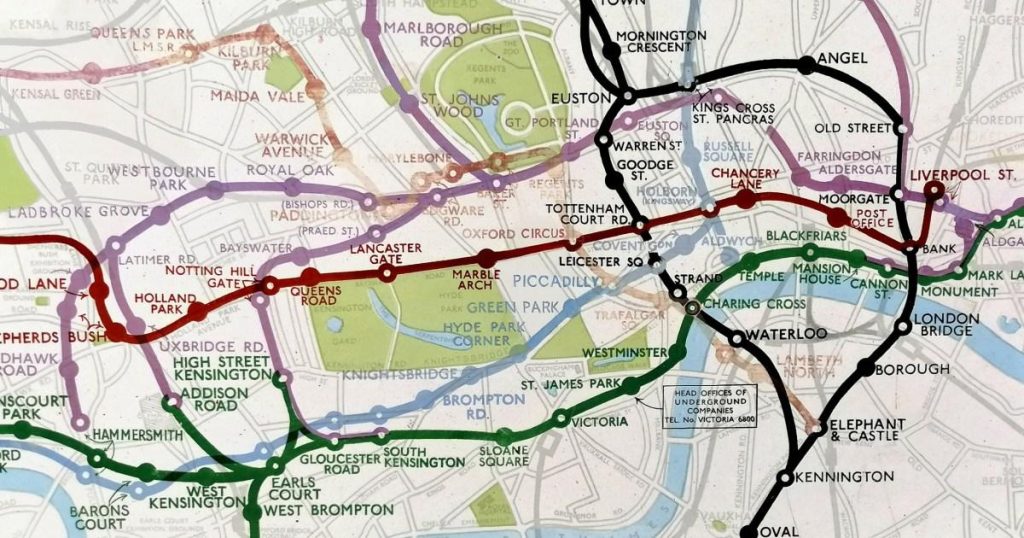A Rare Glimpse into London’s Past: The 1933 Geographical Tube Map
The London Underground, a 162-year-old network, continues to captivate commuters, tourists, and enthusiasts alike. Its history is rich with evolving designs and innovations, perhaps none more iconic than the Tube map itself. Recently, a rare enamel Tube map from 1933 surfaced, offering a unique window into a forgotten London. This geographical map, predating Harry Beck’s revolutionary diagrammatic design, is a relic of a time when the Underground’s representation mirrored the city’s actual layout. Discovered by antiques dealer Chris Berry, the map’s rarity and historical significance are undeniable, making it a highly sought-after piece for collectors and a fascinating artifact for anyone interested in London’s history.
The 1933 map, encased in a robust 40-inch enamel frame, bears the marks of time. Some colors, originally made with organic compounds, have faded, while others remain vibrant. This wear and tear, however, only adds to the map’s authenticity, whispering stories of its past life displayed near a station entrance, exposed to the elements. Designed by Fred Stingemore and framed by Chromo Wolverhampton, the map was built to withstand the harsh British weather. Weighing in at 55kg, its substantial presence underscores its enduring nature. While the Transport Museum holds a similar map, this particular piece is believed to be the only one currently available for sale, further enhancing its exclusivity.
The 1933 map represents a pivotal moment in the evolution of the Tube map. It marks the end of the geographical era and the cusp of Harry Beck’s innovative diagrammatic design. While Beck’s pocket-sized maps were already circulating in early 1933, the larger geographical maps like this one remained in stations until the summer of that year. The shift to Beck’s design was a revolutionary change, prioritizing clarity and ease of navigation over geographical accuracy. The 1933 map, therefore, stands as a testament to this transition, representing the final iteration of a bygone era.
Despite its historical significance, certain details surrounding the map remain shrouded in mystery. Its exact station of origin is unknown, adding an element of intrigue to its story. Imagining the countless 1930s Londoners who consulted this very map adds another layer of historical connection. The map’s journey through time, from its public display to its rediscovery by Chris Berry, is a testament to its resilience and the enduring fascination with London’s Underground.
Chris Berry, known for his expertise in Tube memorabilia, stumbled upon this rare map during a visit to a collector’s trove. While there to sell a London Underground sign, he unexpectedly encountered this historical gem. The exchange, a serendipitous moment for both Berry and the collecting world, highlights the often-unpredictable nature of antique discoveries. Berry’s previous experience with a rare Harry Beck poster, featured on Channel 4’s The Greatest Auction, underscores his discerning eye for valuable and historically significant Tube artifacts.
The emergence of this 1933 map provides a glimpse into the world of Tube memorabilia collecting. Original station roundels, early pocket maps, and vintage posters are among the highly sought-after items. Misprints and unique variations further increase their value, attracting dedicated collectors and enthusiasts. The 1933 enamel map, however, stands out as an exceptionally rare find. Its historical significance, combined with its excellent condition and unique presentation, places it in a league of its own. Berry considers it a "halo piece," a testament to its rarity and the prestige it brings to his collection.


